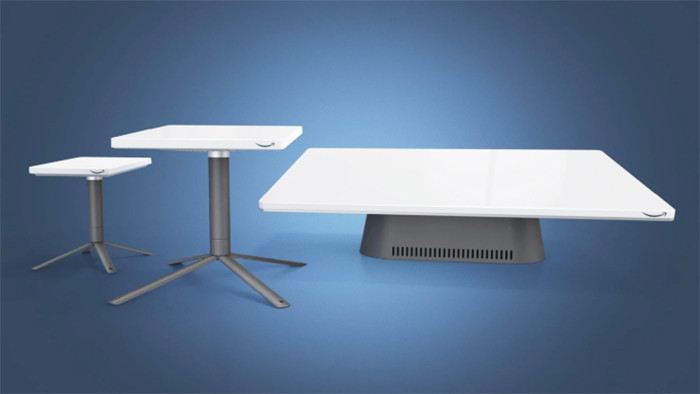Project Kuiper's terminal system is considered to have a simpler design and more options than its competitor Starlink.

Three sizes of Project Kuiper endpoints. Photo: Amazon
In its March 15 introduction to Project Kuiper, Amazon said its satellite internet service has a variety of options. The terminal used to receive satellite signals is designed in a square or rectangular shape, as well as three size options.
Amazon's smallest terminal measures 45 square centimeters and weighs 2 kilograms, but can provide connection speeds of 100 Mbps. Amazon said the option prioritizes portability and low cost, targeting individual users and small businesses looking to save costs. However, the company has not yet given a specific price.
The second option is for home and small business customers who need more bandwidth. The device has a surface area of 70 square centimeters, is 2.54 centimeters thick, and weighs 2.2 kilograms, and offers transmission speeds of up to 400 Mbps. The company plans to sell the product for under $400.
The ultimate device for businesses, governments, and telecommunications companies that need a lot of bandwidth. The product is about 3 square meters, providing Internet speeds of 1 Gbps. However, Amazon has not announced the price and accompanying services.
Meanwhile, SpaceX’s Starlink device, backed by Elon Musk, is shaped like a flying saucer and comes in just one size: 30 x 31 cm. The company recently added a high-performance option designed for businesses and harsh climates that measures 51 x 57 cm. Starlink service offers a maximum speed of about 250 Mbps. According to statistics from Ookla, the average internet speed in the world is 50-85 Mbps.
Project Kuiper endpoints are powered by Amazon’s own custom-designed processor, codenamed Prometheus. The chip combines the power of a smartphone’s 5G modem with a cellular base station to handle traffic from thousands of customers at once. The system features a new generation of antennas that help backhaul traffic, supporting the most robust point-to-point connections.
These terminals then connect to a private satellite network, of which more than 500 have been launched. In 2020, Amazon founder Jeff Bezos announced that he would invest $10 billion in the project, with plans to launch 3,236 satellites into low-Earth orbit by July 30, 2029.
“Our goal with Project Kuiper is not just to connect underserved areas, but to make them happy with the quality of service. From the very beginning, Amazon’s goal has been to deliver the best experience possible. The new endpoints demonstrate that,” said Rajeev Badyal, vice president of technology for Project Kuiper.
Project Kuiper is expected to be commercialized by the end of 2024.
Meanwhile, Musk’s Starlink satellite internet service has also expanded globally. On February 20, SpaceX began testing its Global Roaming service for users in areas where Starlink has not yet been deployed. In addition to the $200 monthly plan, users must purchase a Starlink Kit connection device for $599.
According to VnExpress